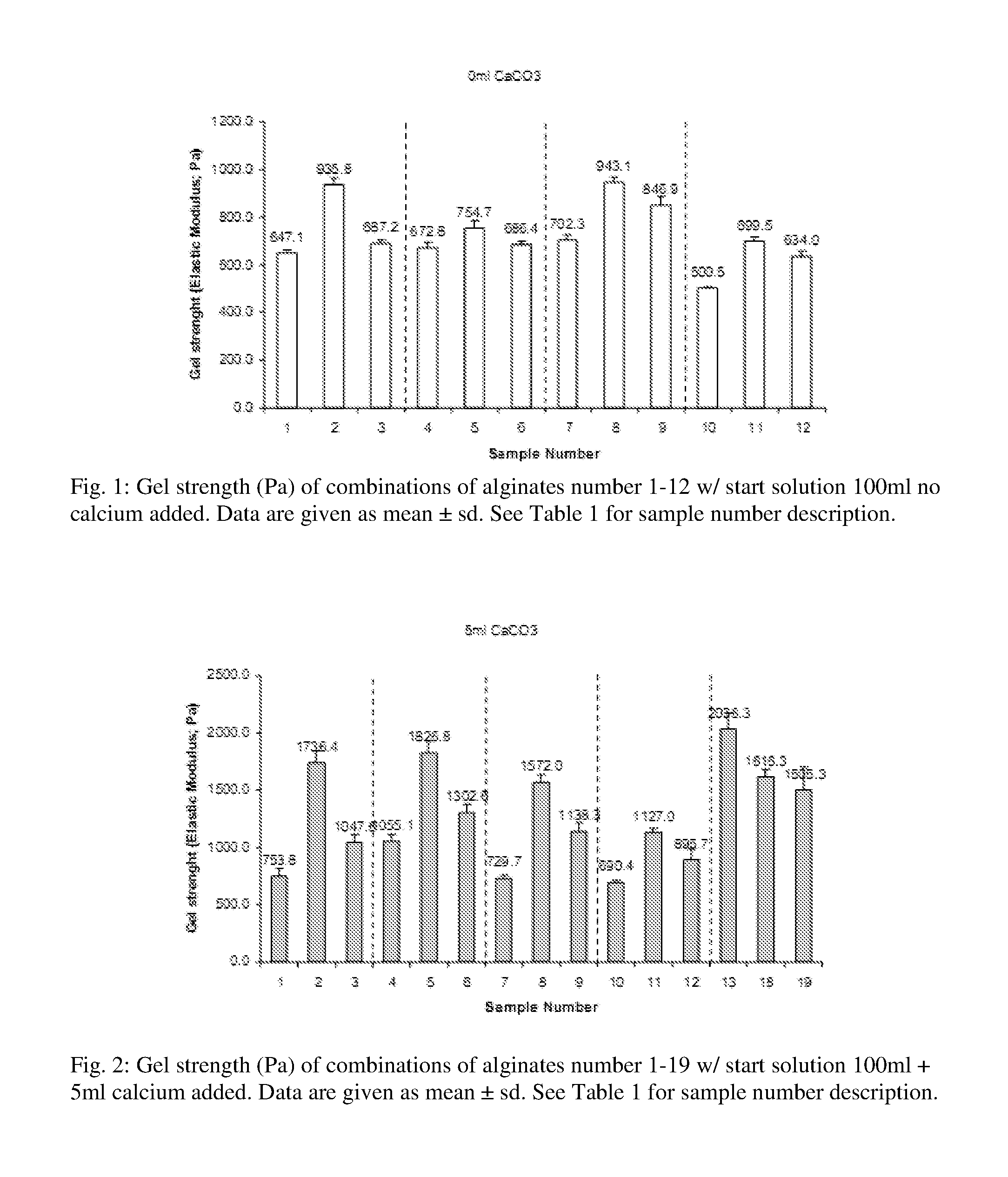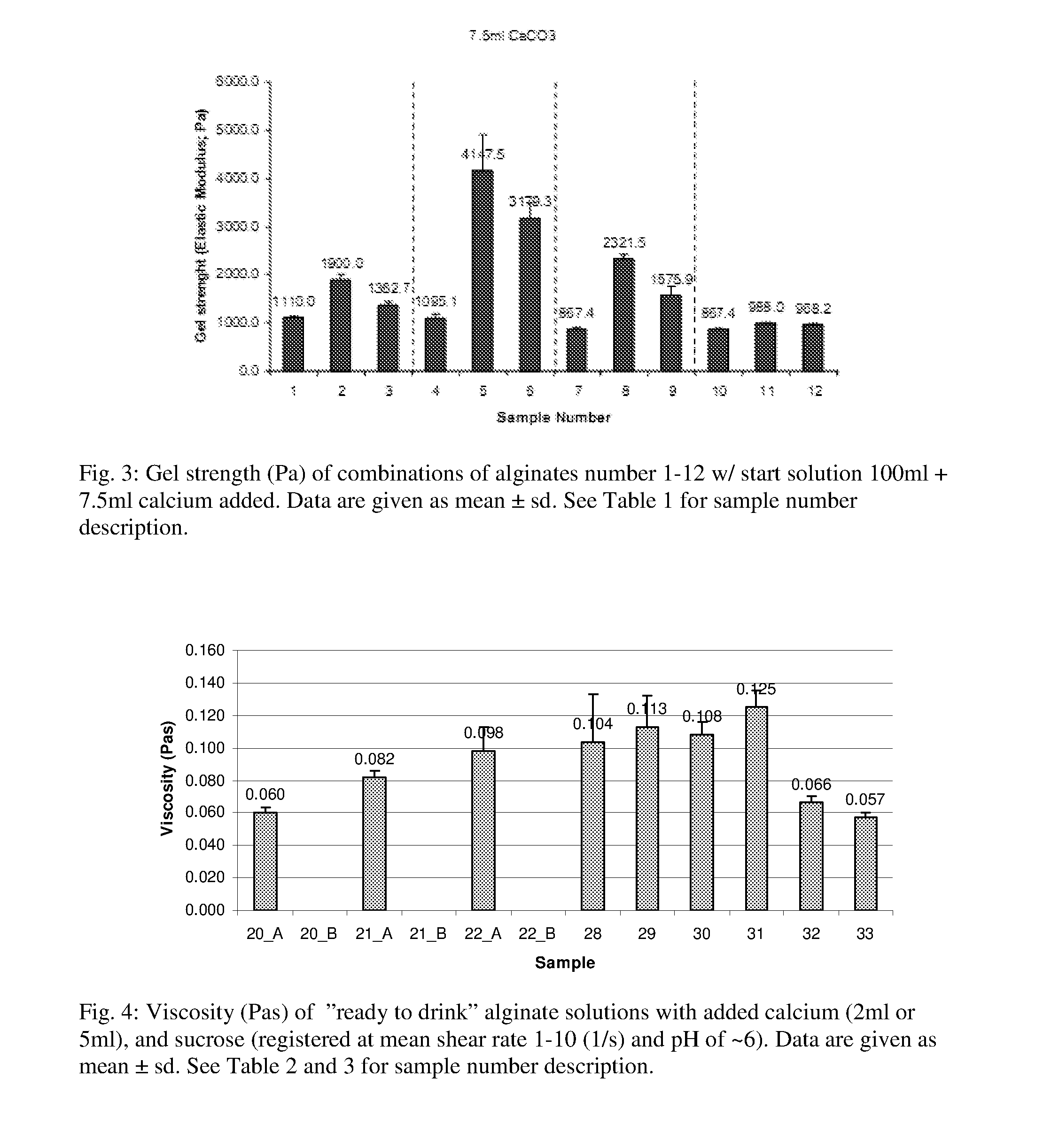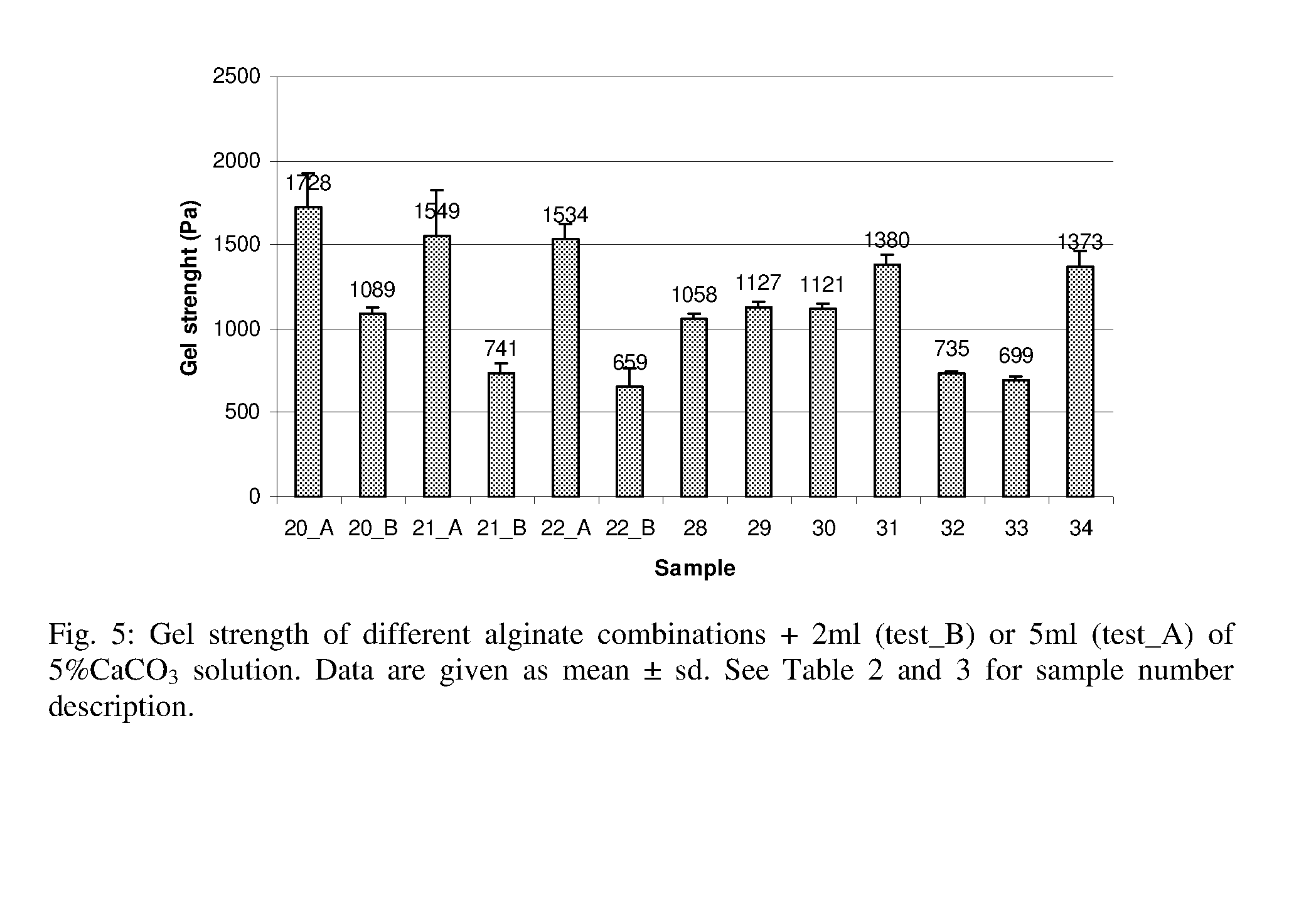The inventors have now discovered that a gel obtained without the use of
calcium ions are not sufficiently strong to be able to be maintained in the
stomach for a sufficiently long duration of time to provide the desired degree of satiety.
However, addition of
flavor additives are not always desirable, as said additives often have a negative
impact on the viscosity of the aqueous preparation, i.e. the viscosity becomes too high before the preparation has been consumed.
A further problem with the prior art aqueous preparations is that the insoluble
calcium salts present in such a preparation will precipitate and / or dissolve during storage resulting in the preparation having an unpleasant appearance.
Apart from the inconvenience of shaking the drink before consumption a heterogeneous product furthermore has the
disadvantage that the
consumer may either not obtain the
calcium salt in a proper
dose for an optimal gel formation to take place, or if the
gel strength is insufficient the physiological stimulation of a feeling of satiety may not be obtained.
Furthermore, the calcium salt will initiate the gel formation before consumption resulting in an unacceptable high viscosity.
The quantity of the soluble alginates, which will dissolve in water, is considered to be limited by the physical nature of the solutions rather than the actual
solubility.
As the concentration of alginate increases the solution passes through stages from a
viscous liquid to a thick paste; at which point it becomes very difficult to disperse further alginate successfully.
This is a well-known problem; see e.g. WO 03053169, which discloses that it is not possible to add high concentrations of alginates to aqueous preparations, as the beverage will reach an unacceptable high viscosity before consumption.
However, these documents are all describing alginate formulations that undergo ionic gelation upon reaction with
gastric acid as they are using an acid-soluble calcium source to form the desired alginate gel, and in the presence of
divalent cations such as calcium ions, it has conventionally not been possible to ensure a stable
aqueous solution having a consisting low viscosity before consumption.
One solution to this problem could be to use alginates having a few guluronic segments, however, this will also provide weaker gels in the
stomach with the result that the desired feeling of satiety cannot be obtained and maintained for a sufficient long period of time.
An additional problem when making aqueous preparations containing alginates is to obtain a solution, which is homogeneous and has a pleasant appearance; otherwise the
consumer will not consider such a solution acceptable for consumption.
One of the problems with obtaining a homogenous solution and at the same time maintaining a low viscosity of the product before consumption is the hydrophilic nature of the alginates, which conventionally makes them useful as thickening agents, but leads to a number of difficulties when the alginates are to be dissolved in water.
Furthermore, even though alginates generally are considered to be soluble in water, a poor dispersion in water will occur if an alginate is added too rapidly to the water, i.e. producing pasty, floury lumps wetted on the outside, only.
If clumps form, the shear is often not sufficient to break them up.
Such aggregates, or “lumps,” are very difficult to disperse because the entrapped bubbles
resist the penetration of water, and therefore, it is difficult for water to penetrate into the interior of a lumpy aggregate.
However, as mentioned above there is a substantial risk of the smaller particles to clump together and thereby preventing efficient solution and dispensation.
Accordingly when alginates in dietary products have been added to aqueous products as dry powders, it is very difficult to dissolve the alginates in water, and it has been proven to be a time-consuming task requiring excessive mixing.
 Login to View More
Login to View More 


